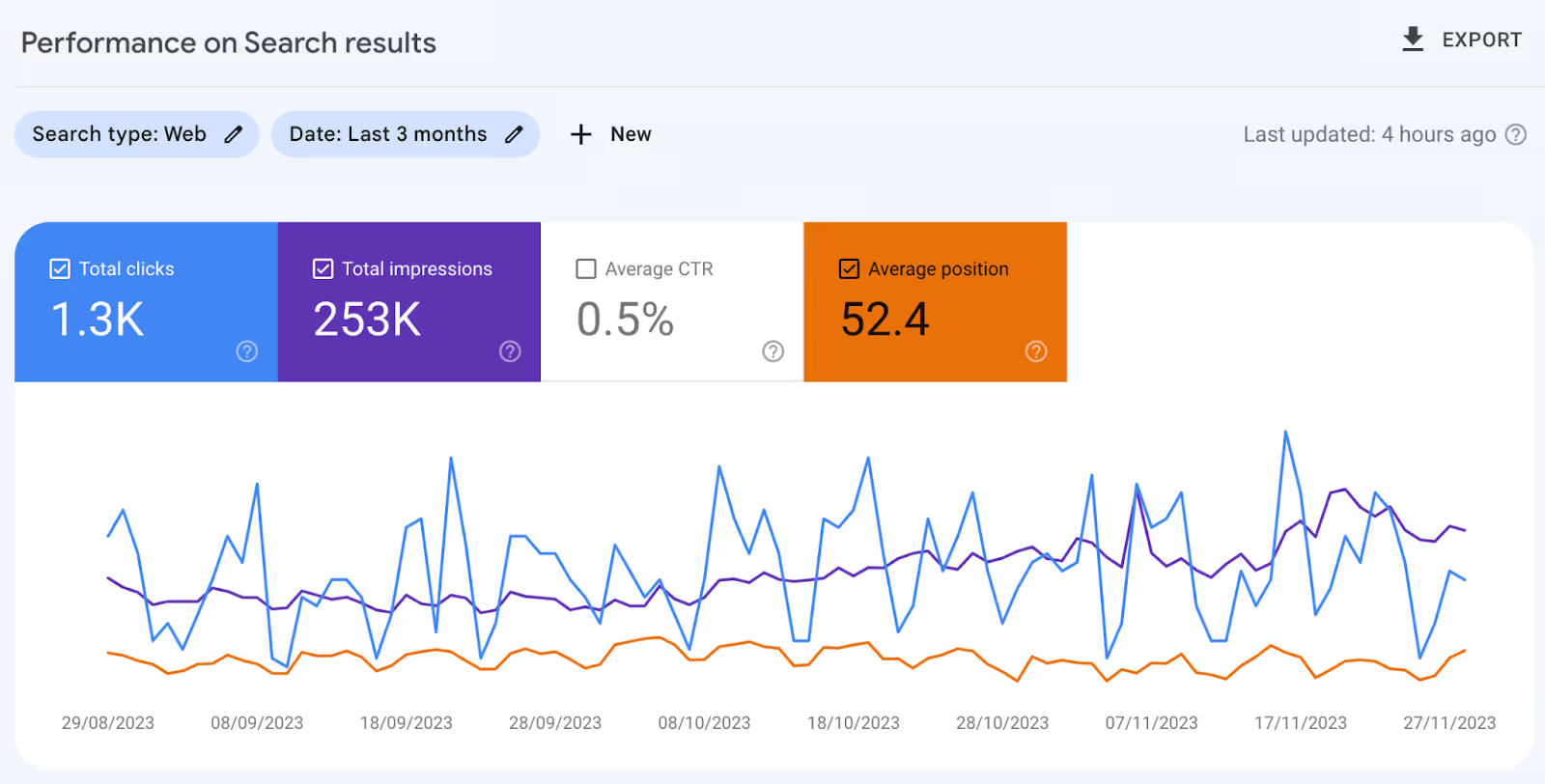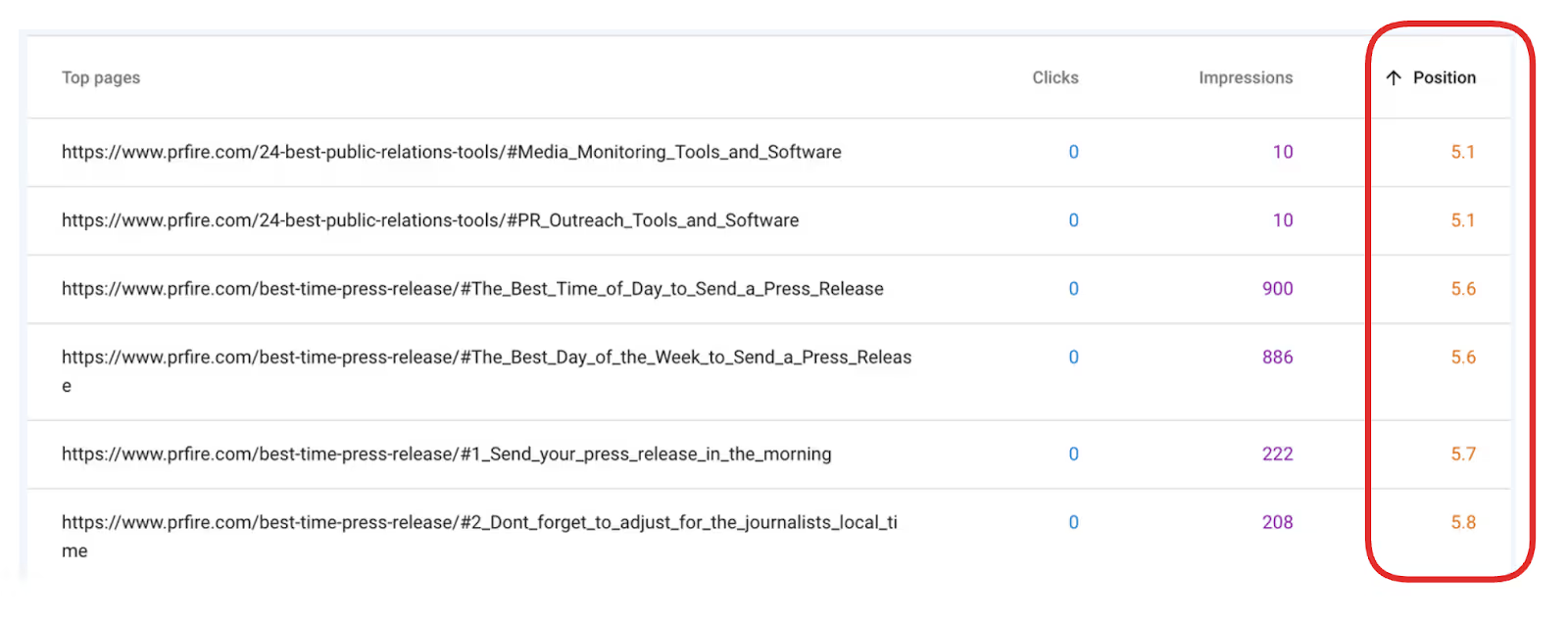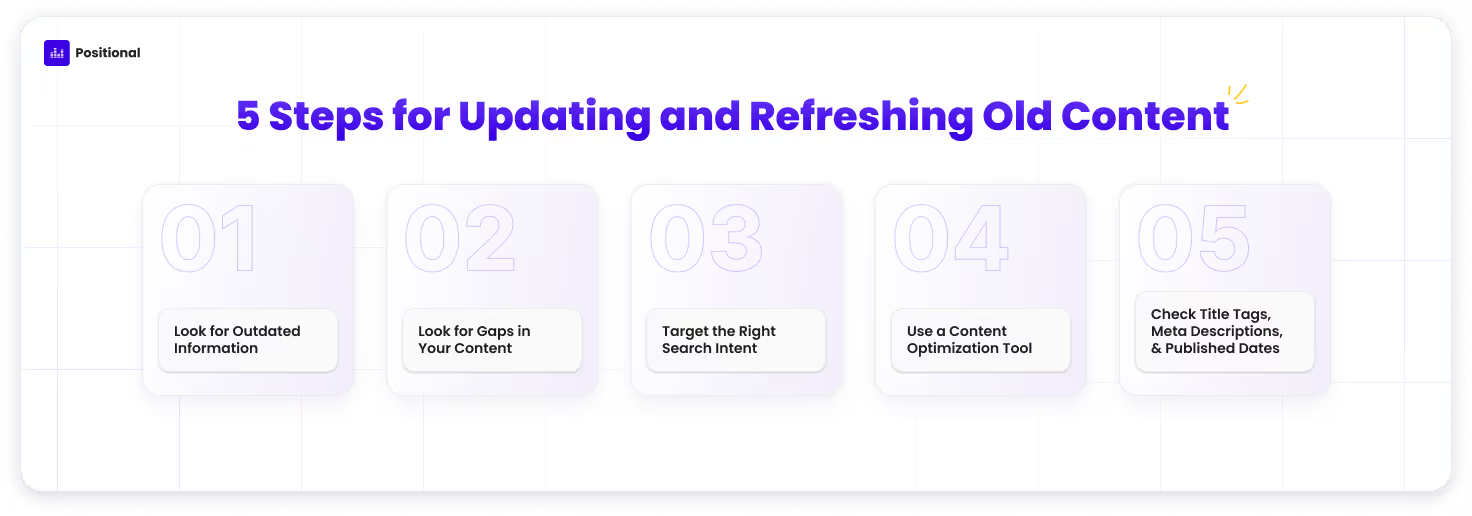Your website’s content will inevitably become less relevant over time. New trends emerge, there’s fresh data to grapple with, and the competition changes every year. But that doesn’t mean you need to let your older content gather dust.
Improving your previously published content or breathing new life into it with updated information, stats, examples, and keywords can improve its performance in organic search and drive more traffic to your site.
What Is a Content Refresh?
Refreshing content means revamping it so that it aligns with current search intent, changing customer needs and industry trends. A refresh can involve small tweaks, like replacing old research with newer findings or optimizing for long-tail keywords, or it can involve a big overhaul: editing and rewriting to include new sections, aligning with new strategies, and meeting current best practices.
For example, a piece from 2020 about content marketing tactics might include outdated methods that used to be effective but no longer get results. It might also include old stats that don’t reflect the current state of the marketing world. A content refresh maintains the piece’s core message but gives it a new lease on life with updated research, examples, and anecdotes.
Refreshing your content might also mean working with an editor to ensure it's easy to read and free of errors — especially if you have content written by authors who aren't professional writers.
How Does a Content Update Help with SEO?
Google knows that the best content is up-to-date, and it can tell when a piece is looking a little bruised and battered due to the passage of time. It will always favor content that meets the searcher’s current intent and includes fresh information.
In 2011, a post on Google’s blog announced that the search engine would start prioritizing “fresh content,” Google has continued to include this ranking factor in its algorithm ever since. Google constantly crawls webpages to find those that have been recently updated and that carry the most relevant information. After making improvements or updates to an older piece of content, you’ll likely see a quick spike in search impressions and the number of keywords the page ranks for as Google starts retesting that piece of content.
And it’s not just updates to the body of your content that can bring rewards. Updating your title tags and published dates can improve click-through rates (CTRs) from search engine results pages (SERPs). Higher CTRs indicate to Google that your content is useful — and therefore worthy of prioritizing in search results. A searcher is going to be much more likely to click on a piece of content with a published date of 2023 than one with a published date of 2020, for example, especially if the newer content has an engaging title tag. Research shows that title tags between 40 and 60 characters in length have the best CTRs, so remember to double-check your meta information when you’re refreshing older pieces of content.
How to Determine Which Content to Refresh
It takes time for Google’s algorithms to really understand the context and quality of a piece of content and then start ranking it in organic search results — anywhere from a couple of months to six months.
You can certainly come back to recently published content and refresh it if something has substantially changed since publishing, but your time is likely better spent refreshing content published more than six months ago or content that’s already on the cusp of driving traffic.
Here’s how to identify content that could benefit from an update.
Find Pages on the Cusp of Ranking Well
You know those posts that are almost ranking well but are falling just short? Maybe they’re in position five or six or are showing up at the bottom of the first page. They might already be ranking for some of your top keywords and bringing in a decent amount of traffic, but there’s room for improvement.

Use Google Search Console and filter by position to find pages that are ranking in the tenth position or higher.

Pages that are already ranking relatively well are often low-hanging fruit — that is, getting them to rank a little higher shouldn’t take too much effort.
You could go a step further and also look at any page on your website ranking on the second or third page of search results. If, for example, you could go from the second page to the first page of results for a given keyword, you’ll likely drive 10 to 20 times more traffic for that keyword, according to CTR analysis by Backlinko.
Analyze Content for Decay
Content decay is a term used to describe a decline in organic traffic. For example, you might have published a post two years ago that enjoyed a ton of traffic in the first few months, but that traffic has decreased over time.
Use Google Analytics to see the trajectory of traffic for your pages and identify the ones that are starting to decay. Navigate to Behavior > Site Content > All Pages to look at a page’s performance over time.

Source: Blue Array
For example, here we can see that traffic peaked shortly after this post was published, then it slowly started to peter out, and now it’s getting almost no traffic at all. As long as this post isn’t time-bound (for instance, a landing page for a webinar that’s long past), it could be a great contender for a content refresh, since it was popular with Google at one point.
You could also use a keyword tracking tool, like one from Positional, Semrush, or Ahrefs, to look for pages that have substantially dropped off in organic search traffic or lost ranking for particular keywords.
Outdated Seasonal and Evergreen Content
You probably have a number of pages that were created to stand the test of time. Often, they’re beefy posts that cover a topic in detail and provide an “ultimate guide” to something that’s not time-bound (for instance, “The Ultimate Guide to Digital Marketing” or “A Complete Overview of Google Analytics”).
While these posts are useful year-round, they cover topics that are constantly changing. Consider how much digital marketing has changed over the past three years, and it’s easy to see how this kind of content can go out of date quickly.
Look for evergreen content, or seasonal content that gets a fresh surge of interest every year, and determine whether it needs a lick of fresh digital paint. For example, you’ll often see companies refreshing their yearly stats posts to align with the current year.

Here’s one of our annual listicles — the year tag makes it relevant for now, but very soon, it will feel outdated. We’ll need to refresh it to include new SEO podcasts and update the year to match.
5 Steps for Updating and Refreshing Old Content

Once you’ve identified a list of pages that could do with a refresh, revamp them by following these steps.
1. Look for Outdated Information
Start by scanning each page for information that’s out of date or no longer valid. This includes things like:
- Dates that have already passed.
- Redundant or broken links.
- Mentions of companies or products that no longer exist.
- Stats that are more than two years old or that no longer reflect the current state of play.
- Old names for companies that still exist (for instance, Twitter instead of X, or Facebook instead of Meta).
These opportunities are quick wins. Even if you address only these issues, you’ll indicate to Google that your page is now more relevant.
2. Look for Gaps in Your Content
If a competitor has published new content on a topic you’ve covered in the past, find out whether that new content offers any insights into how you can improve yours (especially if that competitor’s content is appearing in a better position on SERPs). Identify sections or information that might be missing from your content — maybe the newer piece has additional sections or helpful graphics, or it covers a new trend that yours doesn’t.
Start by searching for your chosen keyword and reading the three to five top-ranking posts. Make a note of the sections they include, and use them to create a new working outline for your refresh. You can also use a tool like Chrome add-on SEO Minion to automatically pull an outline from a piece of content.
You can also use a keyword tracking tool to identify which keywords your competitors’ pages are ranking for but yours aren’t, and check to see whether adding new sections would help your page rank for a larger number of keywords.
With all of the keyword research tools mentioned above, you can choose the competitor URLs you want to scan, and they will compare your keywords against theirs to find any gaps you can swoop in and cover.
3. Make Sure You’re Still Targeting the Right Search Intent
Search intent plays a huge part in search rankings. And search intent may change over time.
If someone is searching for “red hot water bottle,” they probably want to buy a red hot water bottle, not read a 2,000-word guide on how to use a hot water bottle and why doing so is beneficial. Google knows this, which is why user intent is a determining factor in how well a piece of content ranks for certain keywords.
It’s worth checking to see whether the original intent of your page is still the same — are people still looking for the same type of information in the same way? If not, Google will relegate your page to the lower echelons of search results because it will deem the page “not useful” to searchers.
You can make sure your content still matches search intent by:
Looking at What Content Is Already Ranking
The easiest way to suss out user intent is to run a quick Google search for your keyword and see what the top-ranking content looks like. Is it a how-to guide? Is it a landing page? Is it product-related?
The top few results will be a good indicator of what type of content users are looking for when they punch the keyword into Google.
Don’t try to reinvent the wheel here. Don’t think, “Oh, all these posts are guides; I’m going to create a landing page” — because that’s not how it works. Google has determined that people want how-to guides when they search for that term, so that’s the type of content it’ll prioritize.
Exploring Searcher Questions
Google’s People Also Asked (PAA) section will show you what users want to see in content.
For example, when you type “time management tool” into Google, the top PAA questions are “What’s a good time management tool?” “What are five time management strategies?” and “What are the four Ps of time management?”.
Answers to these questions can guide the substance of your content once you’ve made sure you’re creating the right type of content.
Considering the User Journey
You don’t have to include everything. While user intent indicates the type of content people are looking for, it’s up to you to discern who your audience is and what kind of information they need.
For example, if you’re targeting knowledgeable industry pros, you don’t need to answer “What is X?” simply because it hits a ton of keywords. While this might hit user intent, it will put off the people you’re trying to reach. It’s important to create a balance between what Google wants and what your audience needs.
4. Use a Content Optimization Tool
If you published a page a while ago, there’s a chance that new related keywords have popped up since then. Content optimization tools like Optimize, Clearscope, and Surfer can show you what words and phrases you should add to your content to better optimize it.

Here, Optimize not only highlights which words and phrases to add during a refresh but also suggests how many times you should include them. This is based on research from top-ranking pieces to ensure you’re hitting all the right topics.
5. Double-Check Your Title Tags, Meta Descriptions, and Published Dates
If you’re changing the body of a piece, it’s important that you also change your meta information to match. Have you altered the message? Have you added more up-to-date information that’s going to encourage searchers to click through?
Before you publish your lovely refreshed piece of content, rewrite your meta title and meta description to align to any new search intent, be more engaging, and incorporate any new keywords you’re targeting.
As always, make sure to update the published date on your piece of content after a substantial refresh, as this can also have a big impact on the page’s CTR.
Create an Ongoing Content Refresh Strategy
Even if a piece of content is already seeing decent traffic, little tweaks here and there — new information, new stats, and/or new keywords — could give it a welcome boost. Plus, updating content is often much easier than creating new content from scratch.
Start building out your content refresh strategy by:
- Determining which pages and pieces could benefit from a refresh.
- Scanning pieces for areas where you can update information, stats, and examples.
- Comparing your content with your competitors’ content to identify gaps.
- Verifying that you’re still targeting the right search intent.
- Using a content optimization tool to incorporate new keywords and phrases.
- Double-check that your title tags and meta descriptions match your new content.
- Make sure that reviewing published content is part of your editorial process and that you’ve allotted time in your editorial calendar for this work.
Doing this on an ongoing basis for content that was published (or republished) a year or more ago means you’ll consistently have fresh, up-to-date content for your readers. Plus, Google rewards websites regularly share fresh content, so you’ll see your rejuvenated content climb in search rankings to the position it deserves.





